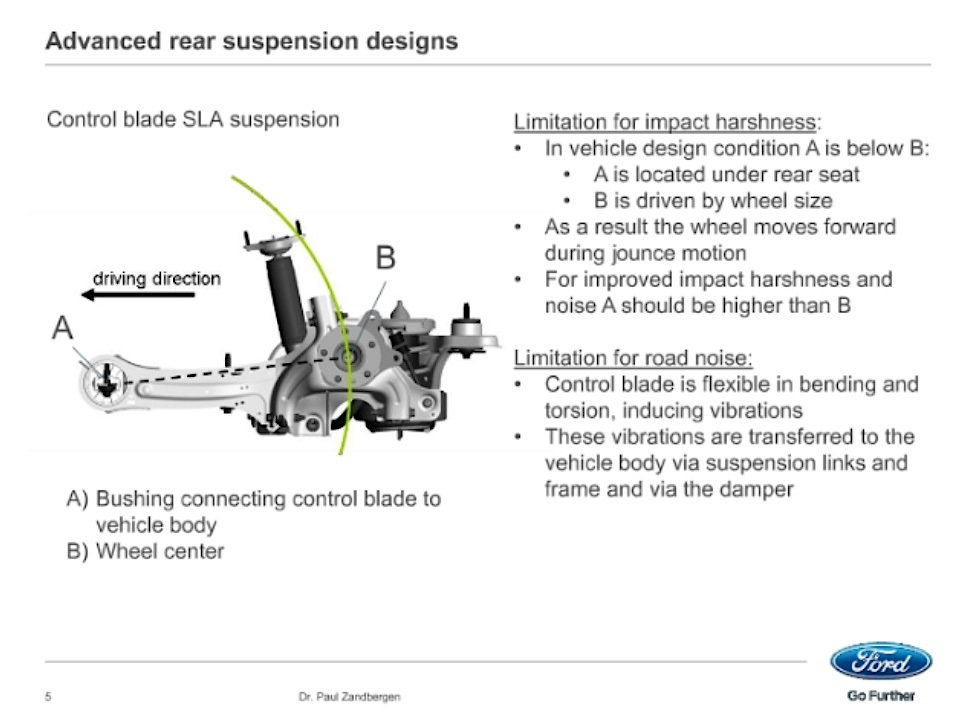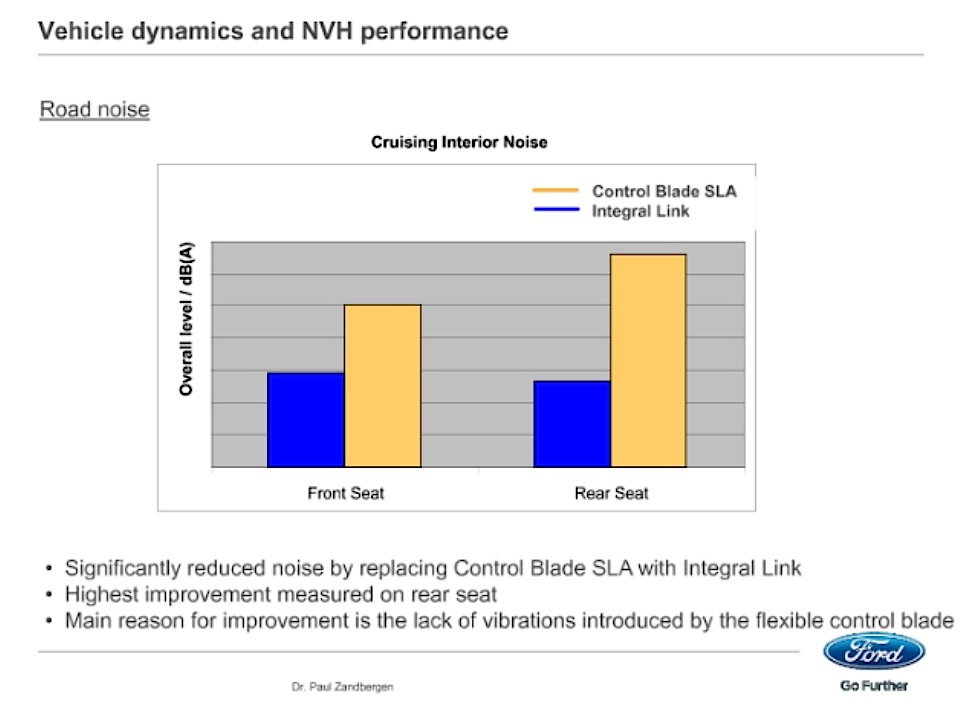Been reading up on the Control Blade rear suspension in the pre-2014 Mazda3. One thing I've seen mentioned in multiple places – though not everywhere – is that the blade itself is meant to flex so that other joints in the suspension can move as intended. E.g.: 2010 Mazdaspeed3: Suspension Walkaround
Fair enough. Makes sense of the fact that it's a blade rather than, say, a boxed design like the front LCAs.
But the forward bushing also has a bunch of compliance, right? Given that, how relevant is the compliance of the Control Blade? Like, if something needs to give in that part of the suspension, won't it be the forward bushing rather than the blade itself? What's the blade's own compliance really adding?
Been thinking about this because I came across some presentation slides from when Ford eventually replaced Control Blade with a design based on an integral link. They cited the flex as a weakness of the design because it generates its own vibrations:


Ignoring practicality for a moment, if one were to make the Control Blade a bunch more rigid while keeping the stock forward bushing, how much (and what) would be lost? Would it just toe in less under compression, or might things start binding up?
Curious to hear any thoughts on this!
The control blade (blue) is a trailing arm that locates the wheel in the fore-aft direction. The trick here is its very thin cross-section that allows it to flex a little so it won't interfere with the smooth operation three lateral locating links.
Fair enough. Makes sense of the fact that it's a blade rather than, say, a boxed design like the front LCAs.
But the forward bushing also has a bunch of compliance, right? Given that, how relevant is the compliance of the Control Blade? Like, if something needs to give in that part of the suspension, won't it be the forward bushing rather than the blade itself? What's the blade's own compliance really adding?
Been thinking about this because I came across some presentation slides from when Ford eventually replaced Control Blade with a design based on an integral link. They cited the flex as a weakness of the design because it generates its own vibrations:


Ignoring practicality for a moment, if one were to make the Control Blade a bunch more rigid while keeping the stock forward bushing, how much (and what) would be lost? Would it just toe in less under compression, or might things start binding up?
Curious to hear any thoughts on this!
